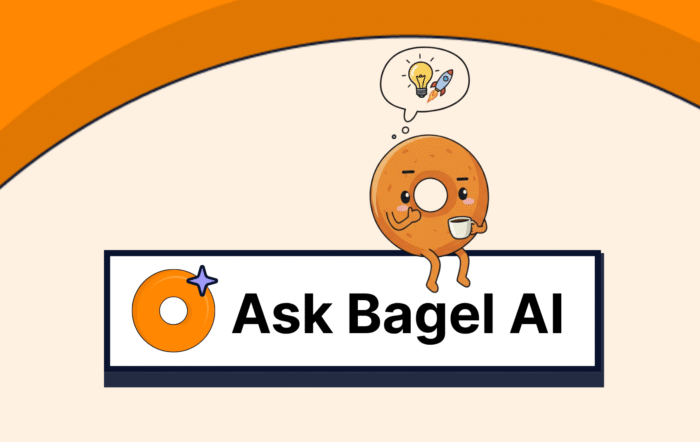Awareness of the Chaos
Product teams today are inundated with feedback from multiple sources: surveys, social media, customer support tickets, product reviews, and more. This “feedback chaos” leads to:
- Overwhelming Data Volume: Collecting feedback from thousands of customers across various channels quickly becomes unmanageable.
- Diverse and Conflicting Preferences: Different customers have unique needs, making it difficult to identify common trends or prioritize actions.
- Stakeholder Confusion: Multiple teams and stakeholders may have conflicting priorities, causing paralysis or misaligned product strategies.
- Missed Insights and Delayed Actions: Without a clear system, important feedback can slip through the cracks, leading to missed opportunities for improvement and delayed decision-making.
Every product team has faced it-the avalanche of customer feedback that feels impossible to untangle. Each stakeholder has their own list of must-have features, driven by the diverse needs of their audiences. The result is a battle of opinions, where the loudest voices often dictate the direction.
Feedback isn’t missing-it’s just buried. And most of it never sees the light of day. Even when teams put in the work to tag and triage it manually, the signal gets lost. By the time a recurring theme is noticed, it’s either too late (the customer churned), or too abstract (another spreadsheet that doesn’t connect to revenue).
What a Product Feedback Analytics Tool Should Do
Centralizing feedback is about bringing all this scattered information into one place, making it accessible, analyzable, and actionable for everyone involved. Key benefits include:
- Visibility and Transparency: All feedback is visible to relevant teams, reducing silos and ensuring nothing is overlooked.
- Efficient Data Analysis: Centralization allows for easier categorization and analysis, helping teams quickly spot trends and prioritize improvements.
- Informed Decision-Making: With a complete view of customer sentiment and recurring issues, organizations can make data-driven decisions faster.
- Improved Collaboration: Teams can work together more effectively when everyone has access to the same feedback and insights.
Centralization ensures nothing gets overlooked. With feedback coming from many sources, important comments can slip through the cracks. Centralizing feedback makes sure every voice is heard.
What to Look For in a Product Feedback Analytics Tool
Not every tool that “collects feedback” gives you this kind of visibility. A true product feedback analytics tool should:
- Aggregate feedback from everywhere your customers speak-Salesforce, Zendesk, Slack, Gong, Jira
- Group that feedback by business-relevant themes
- Automatically connect those themes to ARR signals and customer accounts
- Push insights into your roadmap and team workflows
And crucially, it should integrate where your teams already work, without requiring a brand-new behavior or dashboard.
Why Bagel AI Does This Differently
Bagel AI was purpose-built to solve this exact gap. It doesn’t just tag tickets. It builds an AI-native feedback loop that:
- Auto-groups input into your taxonomy without manual setup
- Highlights which themes matter most based on revenue exposure
- Flags risks and expansion opportunities before they hit the fan
- Surfaces everything inside your roadmap, where decisions actually happen
You don’t need a weekly feedback meeting to decide what’s important-Bagel AI does it in real time.
Before Bagel vs. With Bagel AI: A Side-by-Side Look
| Challenge | Before Bagel | With Bagel AI |
| Feedback sources | Scattered across 6+ tools | Unified automatically, no manual triage |
| Tagging & organization | Manual, time-consuming, error-prone | Auto-grouped by theme with customer-specific taxonomy |
| Visibility into patterns | Delayed and anecdotal | Real-time trend detection across accounts and segments |
| Revenue connection | Disconnected from product decisions | Directly tied to Salesforce, Gong, and ARR signals |
| Roadmap prioritization | Based on gut feel or recency bias | Quantified by urgency, impact, and deal context |
| Cross-team alignment | Requires meetings and guesswork | Synced through tools GTM and product teams already use |
Turn Feedback Into a Strategic Asset
With Bagel, product teams can:
- Stop guessing what to prioritize and start tying every feature idea to business value
- Spot revenue-impacting requests before they become emergencies
- Quantify the cost of waiting-and act fast with full context
You don’t need more feedback. You need to unlock the value of what you already have.
Frequently Asked:
What is a product feedback analytics tool?
A product feedback analytics tool organizes, analyzes, and connects customer feedback from across tools to surface insights that matter to product strategy. The best tools (like Bagel AI) tie that feedback to revenue outcomes.
How do I connect product feedback to revenue?
With Bagel AI, feedback is automatically linked to deal data from tools like Salesforce and Gong-so product decisions reflect actual customer demand and commercial impact.
Ready to Stop Building in the Dark?
Bagel AI turns feedback chaos into strategic clarity. Your roadmap becomes a revenue map. And your product team becomes the most informed team in the business.



